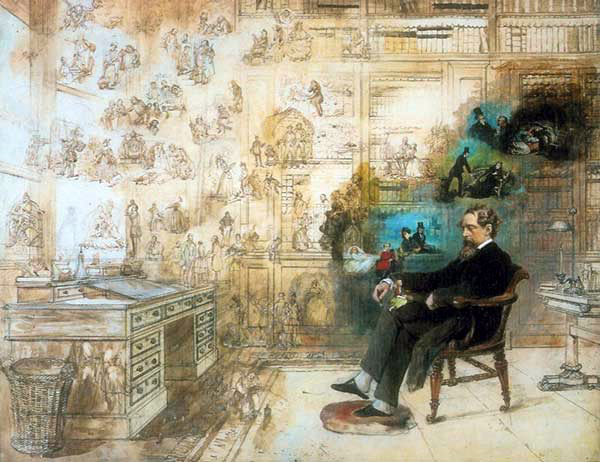The Charles Dickens Museum has rooms that have been recreated to show how Dickens would have lived during his time at the house and there are also several exhibits about his life. It is set on five floors and you are able to see the author’s bedroom, dressing room, dining room, kitchen, sitting room and wine cellar.
Charles Dickens lived in a Georgian terrace house on Doughty Street in London from 1837 to 1839 with his brother, his wife and three of their ten children. The Charles Dickens Museum opened in 1925 after a campaign to save the building from demolition was mounted by the Dickens Fellowship.
During his time living here, Charles Dickens wrote The Pickwick Papers, Oliver Twist and Nicholas Nickleby.
What to see at Charles Dickens Museum
The museum has rooms that have been recreated to show how Dickens would have lived during his time at the house and there are also several exhibits about his life. It is set on five floors and you are able to see the author’s bedroom, dressing room, dining room, kitchen, sitting room and wine cellar.
Dickens’s Dream is one of the museum’s highlights. This unfinished watercolour portrait of Charles Dickens was painted by R W Buss, an original illustrator of the Pickwick Papers, that features many of the artist’s characters.

Temporary exhibitions at the Charles Dickens Museum
The museum also hosts a programme of temporary exhibitions themed around aspects of Charles Dickens’s life and works.
Showtime!
The Showtime! exhibition (until 18 January 2026) looks at how Charles Dickens’s stories have been adapted for stage and screen since 1837. It features original playbills, posters and props alongside Dickens’s own annotated books. Visitors can explore why his work continues to attract filmmakers and playwrights. The display also reflects on Dickens’s lifelong interest in theatre and how it shaped his writing and public readings.
Visiting Charles Dickens Museum
Charles Dickens Museum is in Bloomsbury around a ten-minute walk from Russell Square, Chancery Lane and Holborn tube stations and around a 15-minute walk to Kings Cross St Pancras tube station.
You can get free entry with a valid London Pass or the National Art Pass.
If you enjoyed your visit to the Charles Dickens Museum, you may also want to visit the Charles Dickens Birthplace Museum in Portsmouth and the Dickens House Museum in Broadstairs, Kent.
Most visitors spend 1–1½ hours here, although fans of Dickens’ work may spend a little longer particularly if you stop for a cup of tea in the museum’s small cafe, which is located in the tranquil courtyard at the rear of the building.
Free entry to the Charles Dickens Museum with the London Pass
The London Pass gives you free entry to the Charles Dickens Museum plus entry to over 80 other attractions in London.
We may earn a small commission if you purchase a London Pass after clicking this link.


There are no comments yet.